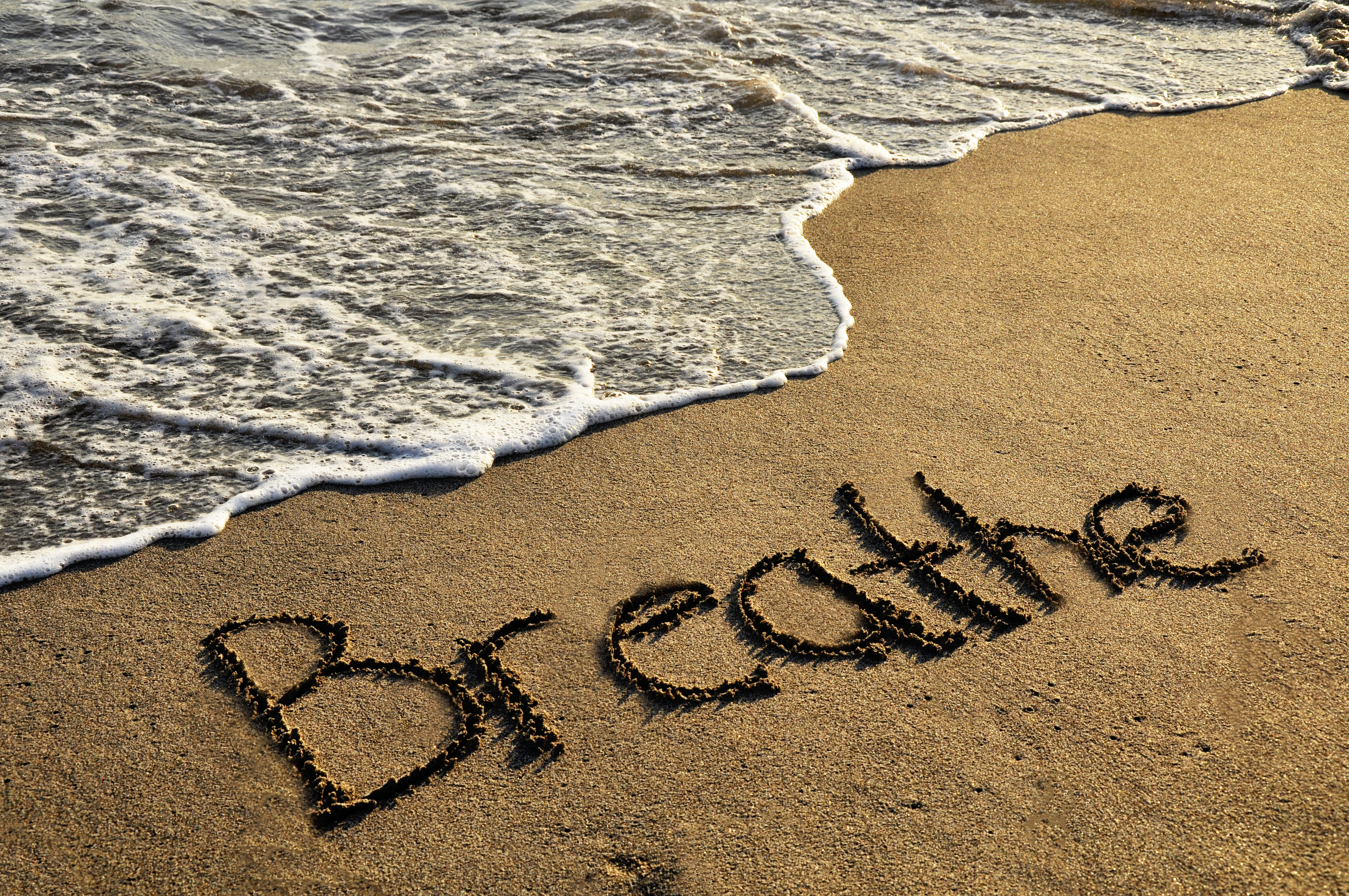And breathe…

Where is your breath right now? When I ask my coaching clients this, they’re often a bit perplexed. “My nose? My mouth? I’m not sure what you mean.”
If you’re also a bit confused by my question, here’s another that might help : Does your breath feel quite high, in your throat or chest, or further down either in your solar plexus area or your belly?
Even though we take on average 20,000 breaths a day, it’s mostly unconscious. That’s not great news given that our breath is pretty fundamental as to whether we feel stressed or not. The way we breathe has the power to either activate or deactivate our vagus nerve, the linchpin of our nervous system and essentially our inner superhighway between stress and calm. This feels particularly relevant in the times we’re living in.
What’s more, most of us don’t breathe properly from our diaphragm, essentially where your belly goes out when you breathe in and back in when you breathe out.
Why don’t we breathe properly?
- Our sedentary lifestyle and poor posture makes it difficult for our diaphragm to function and can in turn weaken our respiratory muscles.
- Research has showed that 80% of people working on screens either held their breath or took shallow breaths
- When we’re exposed to constant stressors – work pressures, bulging inbox, global pandemics – our fight/flight response gets triggered which in turn means we end up shallow breathing.
Working from home during the pandemic will have exacerbated all of the above.
And the double-bind is that, when we get into the habit of shallow breathing, this alone can activate our fight/flight response and generate anxiety without apparent reason.
Don’t take a deep breath
We’re often told to take a deep breath. This actually isn’t great advice. If your breath is high and you’re not used to breathing from your diaphragm, you might just end up heaving an extra-big chest breath which causes more tension. Not helpful.
I have also recently discovered from reading James Nestor’s book Breath how important carbon dioxide is to transporting oxygen around our body. Basically, if we breathe too heavily, we exhale too much carbon dioxide which ultimately increases our anxiety. Who knew?!
Whilst there is a huge amount to say about breathing, what emerges as really important to reduce stress and access calm is to slow down your breathing.
Dormouse breathing
Here’s how I help my clients breathe better – first slower and, in turn, deeper. I invite you to take a minute (literally!) now to try it out. Before you start, notice how you’re feeling right now.
- Make sure you’re sitting or standing up straight and practise taking a few really gentle breaths in through the nose and out through the mouth.
- Place a hand on your belly and, as you continue to breathe in through your nose and out through your mouth, imagine you’re breathing into your hand. You might like to visualise a dormouse asleep in your tummy. If you were watching a dormouse sleep, you’d probably notice a very slight rise in their belly, only very slight. That is how gentle I’d like you to breathe. What can also be helpful is imagining you’re lowering a bucket into a deep well, a little bit at a time. With each breath, allow your breath to get just a little bit deeper.
- Once you’ve got the hang of that, I’d like you to shift your attention to your body. Where are you feeling tension? Your shoulders? Your jaw? Your legs? You may find that this tension has already dissipated as you’ve been breathing, and I’d like you to see if you can release areas of tension as you breathe out each time. For example, start with dropping your shoulders.
- When you’re ready, you can relax your focus on your breathing.
How are you feeling now?
Most people say “calm” or “calmer”. What about you? Your head may feel less noisy, things may seem clearer, you probably feel like you have more space and time.
What would it be like to feel like this more of the time? The good news is that you can access this feeling of calm in 10 seconds! I just timed myself!
A quote to leave you with :“By changing patterns of breathing we can change our emotional states, how we think, and how we interact with the world.” Dr. Patricia Gerbarg, Harvard-trained psychiatrist
What do you think? Drop me a line at alison@alisonreid.co.uk.
Alison Reid is an executive and leadership coach who helps senior managers and directors lead with confidence and stay calm under pressure. She's the author of Unleash Your Leadership : How to Worry Less and Achieve More. Download an extract or buy the book.
Sign up to her mailing list to receive blogs like these direct to your inbox.
